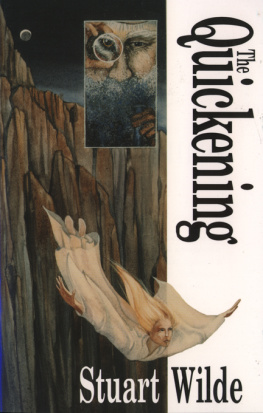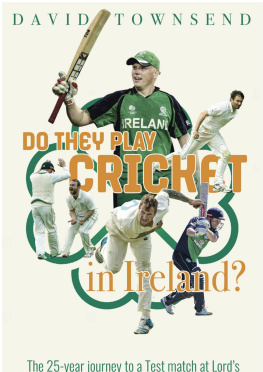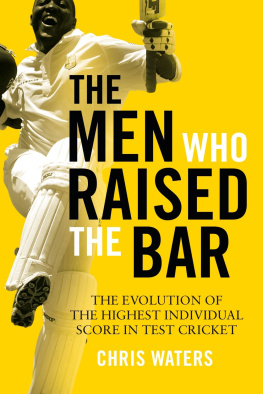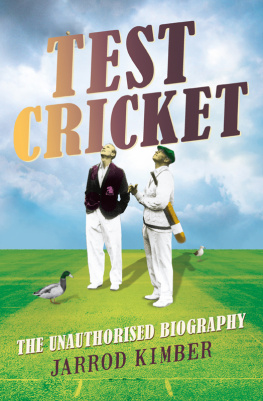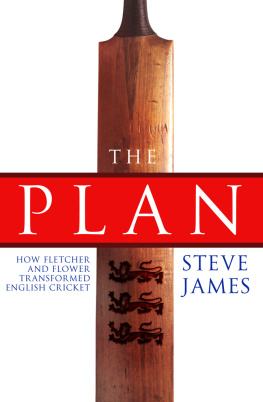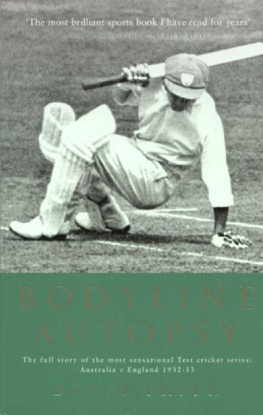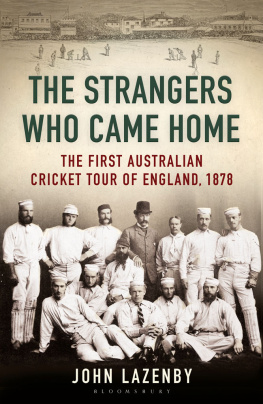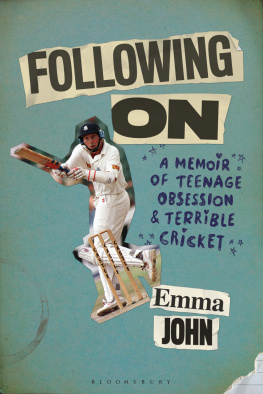FOREWORD BY ED SMITH, NATIONAL SELECTOR, ENGLAND CRICKET
English cricket has a special place in the history of sport. As the first fully organised team game, cricket is the father figure of all modern sport. Cricket is also uniquely bound up with English identity, in all its complexity and subtlety. The story of English cricket, to some extent, is also the story of England itself.
This is one of our games great strengths the breadth of opinion and wisdom, the contrasting landscapes, the different approaches to achievement and success, even the range of its accents. There has never been one route to the top in English cricket and there never will be.
The chalk downs of the south where the game was born; the village pitches where cricketing artisans earned a living and elevated the early professional game; the draw of London life with its sporting theatre and new sources of income; the industrial city and the emergence of deep local pride in county sides; the school and university tradition; the competitive cricket of the northern leagues; the local club, from village green to city park.
All these forces have shaped and contributed to English cricket. They are all bound up with our games voice and identity, as Simon Wildes book explores.
The beauty of English cricket is that it can never be contained or owned by one place or faction. English cricket at its best celebrates the breadth and colour of the country it reflects, represents and, at times, inspires.
Anyone who really serves English cricket, whatever their personal journey through the sport and the country, comes to understand that our game is strongest when it draws on all types of talent and ability.
The story of England cricket is often explored through divisions and conflicts amateur versus professionals, North versus South, modernisers versus traditionalists. Sometimes, I concede, it is hard to avoid those themes.
If, however, we are considering the story of English cricket in the form of a single life (a biography) then what a great life it has been full of achievement and adaptability, drama and value, brilliance and resilience. Yes, there have often been tensions inside English cricket. But rich and interesting lives usually have some tension; it is bound up with their creative energy.
As I write these lines, the England one-day side has just scored a scintillating 481 against Australia, breaking its own world record.
Best of all, in the biography of England cricket, the greatest chapters may be yet to come.
CHAPTER 1
Band of Brothers
In February 2017, a special dinner was held at Lords to which every living England cricketer, whether they had played Tests, one-day internationals or Twenty20s, was invited. Some were unable to attend, others who had long ago lost contact with colleagues and were no longer involved in the game could not be tracked down, but of the 321 surviving male players, 230 attended the largest gathering of England cricketers ever assembled in one room. Everyone was given a commemorative tassled cap with their name and personal number on it marking their chronological place in the teams history. Tables had sitting at them a player who was still actively involved: he presented caps to past players and they in turn gave a piece of card with a few words of advice on it to the latest custodian of the national shirt. Old friendships were renewed and memories revived, and there was general praise for the man whose brainchild the occasion was, the managing director of England cricket Andrew Strauss.
Strausss purpose was twofold. He himself had played 100 Test matches, 50 of them as captain, and was conscious of how fleeting many international careers were and how little connection many players actually had with the England team they represented. Even a player as senior as Andrew Flintoff, the star all-rounder of his day and alongside Strauss an Ashes winner in 2005 and 2009, had in the past spoken about how raw he felt at ending his involvement with international cricket. England cricketers were members of a special club, yet how special did they feel? Of the 684 Test cricketers to represent England, almost half appeared five times or fewer, 95 only once.
Strauss also wanted the present generation to tap into what he described as a of past cricketers, and make them aware they had a responsibility to the cap, the shirt and the nation: they represented their country, but they also represented a team with a distinguished if turbulent and sometimes troubled history stretching back 140 years; some of their predecessors had gone through extraordinary experiences before ever making it onto the field in days long before developmental pathways from age-group cricket to the Test arena had been dreamt up: some had been orphans, some overcame life-threatening illness, some fought in world wars. Some who previously represented England were killed in war. While not suggesting that modern-day players had had life easy some certainly had not Strauss in 2017 felt it could only improve them, as people and cricketers, if they gained a better understanding of the past, and what it was they were a part of. What they are part of is the story traced by this book.
The England cricket team cannot boast the glorious traditions of some sporting outfits. They are not the equivalent of the All Blacks in rugby, or of Brazil or Germany in football. They have never gone 15 years without losing a series, as the vaunted West Indies side of the 1980s and 1990s did, or remained unbeaten in Ashes series for 18 years, as the great Australians managed between 1987 and 2005. In more than 40 years of trying they have never won the World Cup and when they did win a World Twenty20 they struck gold with an XI pulled together on the eve of the tournament. There have been exceptional periods when they could justifiably claim to be the best Test team in the world examples include the late 1920s, the mid-1950s and 2010-11 but sustained success has been hard to secure, especially away from home. Australia, the opponents against whom England test themselves every two years, have generally proved a tough nut to crack.
The doleful truth is that they have been defined as much by their shortcomings as their triumphs. Just as the English public like to grumble about the weather, so they moan about the England cricket team and how frequently the grey days outnumber those when the sun shines. What tests the patience is not just the on-field mishaps (although the capacity to lose to the likes of the Netherlands, Ireland and Bangladesh in global one-day tournaments is vexing, and dont get me started on the batting collapses...) but also the knack of conjuring out of nowhere an administrative cock-up or soap-opera-style scandal. You cannot chronicle England cricket without dealing with bureaucracy, barmaids and street-brawls, or headbutts. Rarely has it been free of crisis.
Modern audiences brought up on the dynamism of Joe Root, or the scoops and flicks of Jos Buttler and Eoin Morgan, may think England crickets relationship with flair has always been a close one; in truth, the team was built on generations of temperate-clime battlers, northern opening batsmen with granite-like defences, and bowlers steeped in the craft of seam and swing. This is a tale in which striving and heroism against the odds prominently feature: England may not have produced many vintage cricket teams but being familiar with backs-to-the-wall crises they have provided some vintage escapologists: Willie Watson and Trevor Bailey at Lords, and Michael Atherton in Johannesburg, batting for hour after hour to save the game; Bob Willis at Headingley, and Ian Botham at Edgbaston, steaming in to win Tests that had looked lost. Captaining such a team, usually with little security of tenure, was no easy matter and the role took a heavy toll on most of those who did it for any length of time, however talented or resilient. The public scrutiny alone made it one of the toughest public offices in the land. Michael Vaughan wore the crown more lightly than many, and in terms of Test wins enjoyed more success than any, yet even he departed shedding tears, worn out by the constant need to wear a


